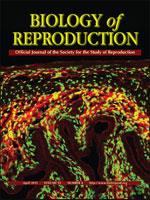We have previously shown that the carboxyl terminus (cT) of human follicle-stimulating hormone (FSH, follitropin) receptor (FSHR) is clipped before insertion into the plasma membrane. Surprisingly, several different constructs of FSHR fluorescent fusion proteins (FSHR-FPs) failed to traffic to the plasma membrane. Subsequently, we discovered that substituting the extreme cT of luteinizing hormone (LH) receptor (LHR) to create an FSHR-LHRcT chimera has no effect on FSHR functionality. Therefore, we used this approach to create an FSHR-LHRcT-FP fusion. We found this chimeric FSHR-LHRcT-FP was expressed in HEK293 cells at levels similar to reported values for FSHR in human granulosa cells, bound FSH with high affinity, and transduced FSH binding to produce cAMP. Quantitative fluorescence resonance energy transfer (FRET) analysis of FSHR-LHRcT-YFP/FSHR-LHRcT-mCherry pairs revealed an average FRET efficiency of 12.9 ± 5.7. Advanced methods in single-molecule analyses were applied in order to ascertain the oligomerization state of the FSHR-LHRcT. Fluorescence correlation spectroscopy coupled with photon-counting histogram analyses demonstrated that the FSHR-LHRcT-FP fusion protein exists as a freely diffusing homodimer in the plasma membrane. A central question is whether LHR could oligomerize with FSHR, because both receptors are coexpressed in differentiated granulosa cells. Indeed, FRET analysis revealed an average FRET efficiency of 14.4 ± 7.5 when the FSHR-LHR cT-mCherry was coexpressed with LHR-YFP. In contrast, coexpression of a 5-HT2cVSV-YFP with FSHR-LHR cT-mCherry showed only 5.6 ± 3.2 average FRET efficiency, a value indistinguishable from the detection limit using intensity-based FRET methods. These data demonstrate that coexpression of FSHR and LHR can lead to heterodimerization, and we hypothesize that it is possible for this to occur during granulosa cell differentiation.
How to translate text using browser tools
11 March 2015
Single-Molecule Analyses of Fully Functional Fluorescent Protein-Tagged Follitropin Receptor Reveal Homodimerization and Specific Heterodimerization with Lutropin Receptor
Joseph E. Mazurkiewicz,
Katharine Herrick-Davis,
Margarida Barroso,
Alfredo Ulloa-Aguirre,
Barbara Lindau-Shepard,
Richard M. Thomas,
James A. Dias
ACCESS THE FULL ARTICLE

Biology of Reproduction
Vol. 92 • No. 4
April 2015
Vol. 92 • No. 4
April 2015
follicle-stimulating hormone (FSH/FSH receptor)
gonadotropins
granulosa cells
mechanisms of hormone action
oocyte maturation




